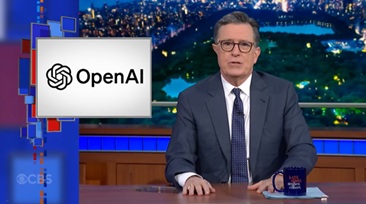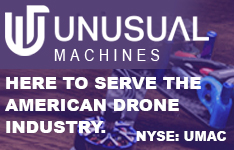The New York Times is sounding alarms about an AI bubble.

Television personality Stephen Colbert is joining the chorus.

During his broadcast, Colbert referenced an expert claiming the "AI bubble is 17 times the size of the dotcom frenzy."
We're familiar with the dot-com narrative's conclusion — a spectacular collapse where technology stocks shed 80% of their value.
Are we witnessing a repeat of the 1999 scenario?
During the internet boom's peak, we constructed a digital infrastructure that remained largely unused.
By 2001, telecommunications companies had installed over 80 million miles of fiber-optic cabling. That's sufficient to encircle Earth 3,000 times. Yet less than 3% of this capacity was actually utilized.
The remaining cables lay dormant. Empty channels await traffic that took ten years to materialize.
It was all promise with minimal substance.
Jump to today, and we're experiencing an even more massive historical infrastructure expansion.
Technology giants will invest over $350 billion this year alone, constructing new AI computational facilities. That exceeds the yearly economic output of countries like Greece or New Zealand!
It represents the largest expansion effort in history, without exception.
The key distinction is that when these computational centers become operational, they won't remain inactive. Microsoft Corp. (MSFT:NASDAQ) and Oracle Corp. (ORCL:NYSE) are alerting customers that new AI-capable servers are backordered for years.
Unlike fiber networks, which remained "dark" for extended periods, the demand for AI capabilities is extraordinary. Google reports that Gemini usage has increased 14X since last December. ChatGPT now serves more than 800 million weekly users.
The internet in 1999 faced insufficient demand. Today's situation is precisely opposite.
My advisor, David Galland, launched an internet banking venture during the dot-com excitement.
He'd enter venture capital meetings anticipating enthusiasm.
Instead, they'd dismiss him.
The issue was that David actually operated a genuine, profitable enterprise. One investor told him directly, "We can't back you . . . you have a business plan."
That characterized the atmosphere then. Having revenue and profits was considered problematic! Because revenue provided investors something concrete to measure expectations against, and imagining possibilities untethered from reality was more appealing.
The dot-com expansion was primarily funded through debt and wishful thinking.
I'm not referring solely to unprofitable startups like Pets.com. During the 1990s, most companies installing fiber networks generated zero profits and carried enormous debt burdens.
That's why the dot-com growth transformed into a collapse, and why the downturn was so severe.
Looking at today, the AI expansion is being financed by the most financially successful corporations in capitalism's history.
Microsoft, Amazon.com Inc. (AMZN:NASDAQ), Meta Platforms Inc. (META:NASDAQ), and Alphabet Inc. Class A (GOOGL:NASDAQ) are funding AI computational facilities from their abundant cash reserves.
They have no need to borrow. And even if external financing disappeared tomorrow, investments would continue. Just consider what the financial decision-makers are saying. . .
Mark Zuckerberg: "If we end up misspending a couple of hundred billion dollars, I think that that is going to be very unfortunate, obviously. But what I'd say is I actually think the risk is higher on the other side."
Google co-founder Larry Page said, "I'm willing to go bankrupt rather than lose this race."
But Stephen . . . AI stocks are overpriced!
That's the impression you'd get listening to The NYT or late-night television hosts.
I examine facts. And the facts contradict this view.
Let's examine the quintessential AI success story thus far, Nvidia Corp. (NVDA:NASDAQ).
Nvidia shares have risen 1,300% in three years. But that doesn't make them overvalued.
Their earnings have grown so rapidly that their stock is LESS EXPENSIVE than when ChatGPT debuted three years ago.
It trades at 35 times next year's projected earnings.
At the dot-com boom's height, the average Nasdaq stock was priced at 90 times forward earnings. And hundreds of unprofitable startups were valued purely on potential.
Yet the dot-com era and AI share common elements.
- A transformative technology.
- A swift infrastructure development.
- And similar to 1999, AI stocks are climbing steadily.
Nevertheless, the straightforward, evident phase — when simply investing in AI infrastructure providers was the correct strategy — has concluded.
We're now in the AI Endgame.
Long-time readers know I've been consistently and unapologetically optimistic about AI.
However, my perspective has evolved in several significant ways.
I'll be writing more about the coming changes in the AI boom, and what it means for investors, in my free investing letter, The Jolt. You can sign up here.
| If you enjoyed this, make sure to sign up for the Jolt, Stephen McBride's twice-weekly investing letter-where innovation meets investing. | Go here to join |
Important Disclosures:
- Stephen McBride: I, or members of my immediate household or family, own securities of: None. My company has a financial relationship with: None. My company has purchased stocks mentioned in this article for my management clients: None. I determined which companies would be included in this article based on my research and understanding of the sector.
- Statements and opinions expressed are the opinions of the author and not of Streetwise Reports, Street Smart, or their officers. The author is wholly responsible for the accuracy of the statements. Streetwise Reports was not paid by the author to publish or syndicate this article. Streetwise Reports requires contributing authors to disclose any shareholdings in, or economic relationships with, companies that they write about. Any disclosures from the author can be found below. Streetwise Reports relies upon the authors to accurately provide this information and Streetwise Reports has no means of verifying its accuracy.
- This article does not constitute investment advice and is not a solicitation for any investment. Streetwise Reports does not render general or specific investment advice and the information on Streetwise Reports should not be considered a recommendation to buy or sell any security. Each reader is encouraged to consult with his or her personal financial adviser and perform their own comprehensive investment research. By opening this page, each reader accepts and agrees to Streetwise Reports' terms of use and full legal disclaimer. Streetwise Reports does not endorse or recommend the business, products, services or securities of any company.
For additional disclosures, please click here.














































